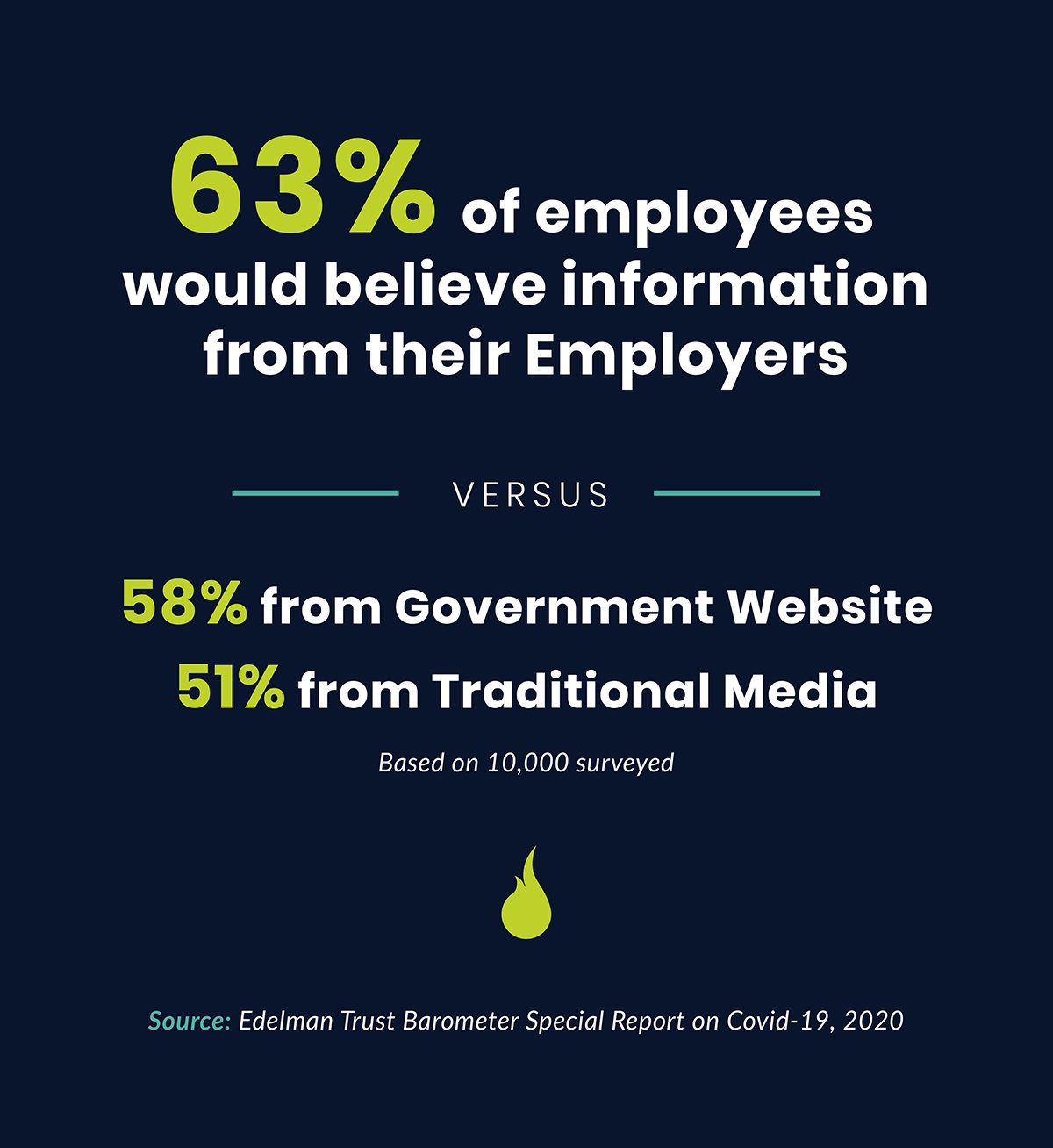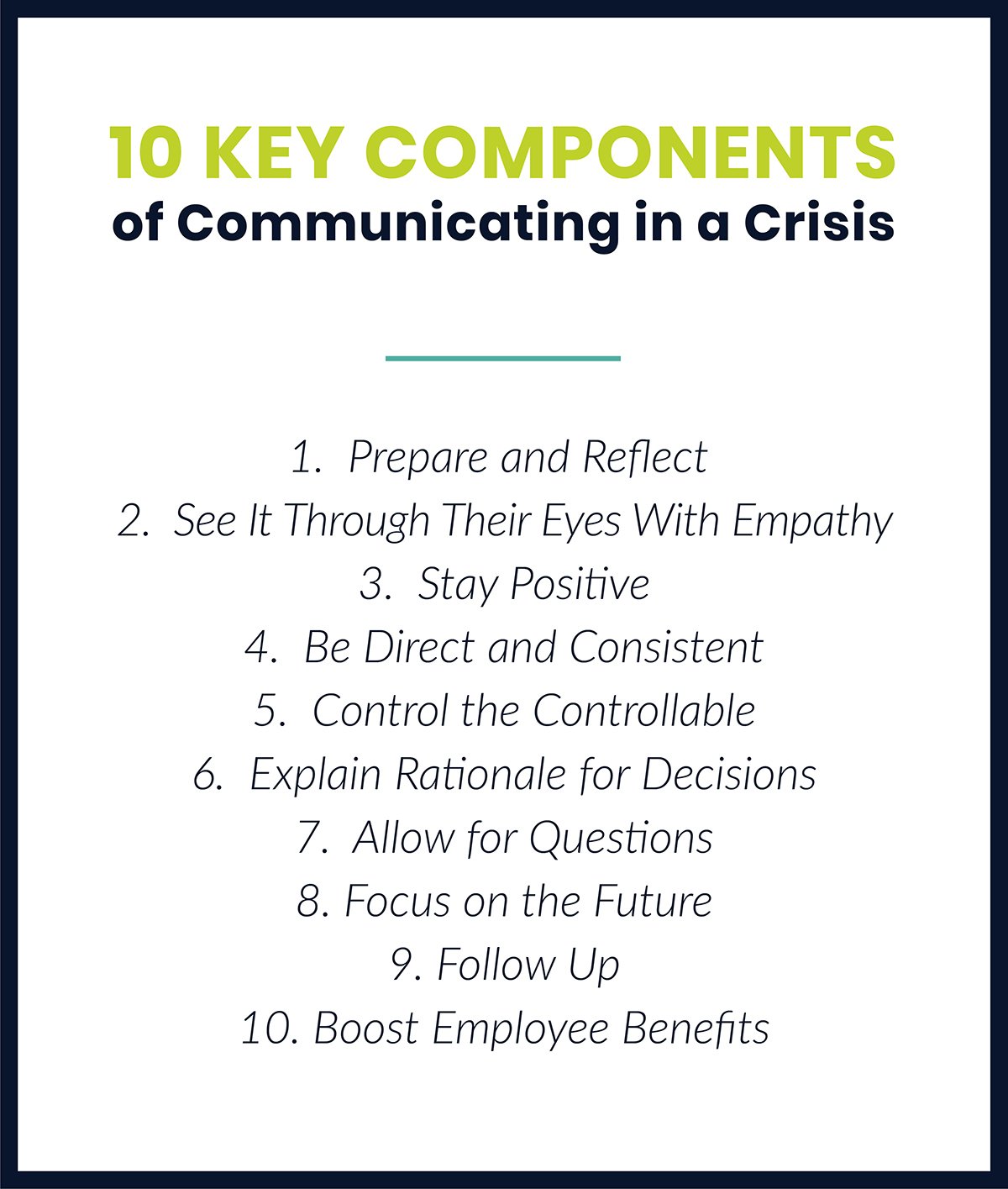
There are certain employee communication plans you hope your organization never has to use. They stay tucked away in the shared drive for an unthinkable and unlikely day. But with the rapidly-evolving coronavirus pandemic blindsiding employers around the globe, the unfathomable is becoming the norm. Some are left to dig out their crisis communication plans while others are starting a draft from scratch.
According to a new Edelman Trust Barometer Special Report on COVID-19, employees see employer communications as the most credible source of information about the coronavirus:
- 63% of the 10,000 surveyed said that they would believe information from their employer, versus 58% from a government website and 51% from traditional media sources
- In eight of the 10 countries surveyed, “my employer” is seen as better prepared for the virus than "my country"
- 62% have high trust in “my employer” to respond effectively and responsibly to the virus
This presents you with a powerful responsibility: to deliver employee communications that don’t miss the mark.

What Do Employees Want to Hear?
According to the Edelman report:
Employees Want Clarity On:
- How many colleagues have contracted the virus (57%)
- How is the virus affecting the organization’s ability to operate (53%)
- What to do avoid bringing the virus into the workplace (66%) and to stop the spread of the virus (61%)
- Email or newsletter (48%)
- Posts on the company website (33%)
- Phone/video conferences (23%)
10 Key Components of Communicating With Employees in a Crisis
While facts are probably changing fast, it’s important to continuously collect relevant information and use it to refine your communication goals. If you’re using the preferences outlined above, start with what you know. Compile a list of who is directly affected on your team, how it impacts the organization’s ability to conduct business, and what mitigating the problem looks like at the organizational level.
2. See It Through Their Eyes With EmpathyAccording to the Harvard Business Review, “put yourself in your [employees'] shoes to understand their anxiety. You will sometimes get it right, and you will often get it wrong, but it is still better to be as transparent as you can.” While you’re preparing and reflecting, view your communications through the lens of what your employees want to know and also how they feel. Address those concerns often. In uncertain times, a little humanity can go a long way.
3. Stay PositiveYou can be proactive and still keep things positive. Underscore the seriousness of the situation, but infuse affirmative, forward-looking language that speaks to solidarity, security and a new chapter of shared perseverance ahead.
4. Be Direct and ConsistentDon’t over-speak. Avoid mixed-messages. Take what you’ve reflected on and tie it to shared goals and the best strategies for co-creating a solution. You can offer your perceptions, but root them in facts and information from trusted sources.
5. Control the ControllableThis speaks to transparency. Explain what you know, what you don’t know, and who your sources are. What you do know and what you can do are what you should communicate clearly. It’s equally important to mention the situation is evolving and you’ll share more facts and directives as things unfold.
6. Explain Rationale for DecisionsAs you reach key decisions with your crisis management team, explain how you got to where you are. Use it as a stepping stone to work together, address issues, implement changes, hold people accountable and follow through.
7. Allow for QuestionsThere will be plenty. Insert consistent contact information in every communication. Whether it’s a dedicated web page, email address or phone number, make it easy for your employees to reach out with questions, concerns and feedback. Reply within 24 hours.
8. Focus on the FutureYour business’s ability to communicate clear future goals, guidelines and expectations shows you’re still proactively planning on your employees’ behalf. This strengthens their sense of security, infuses that much-needed positivity and prevents the team dynamic from dwelling or stagnating.
9. Follow UpAccording to the Harvard Business Review, during a crisis like the coronavirus pandemic, employers should communicate with their employees no less than every other day. Keep delivering timely information instead of waiting until you know all the answers.
10. Boost Employee BenefitsThere’s a reason your benefits portfolio covers a wide range of financial, health and personal issues. Sometimes the “just in case” becomes the now. Continuously promote applicable resources like telehealth services and Employee Assistance Programs (EAP). Ensure they’re easy to access and reiterate the message that you’re here to help.
Uncertainty is Okay.
When dealing with the uncertainty of a crisis, organizational leadership should view things from the perspective of their employees and exhibit empathy over fear of “saying the wrong thing.” This means reiterating you don’t have all the information all the time. Reveal as much as you can as often as you can, and be diligent about correcting inaccuracies every step of the way.
Above all else: show them you’re here and that you care.



